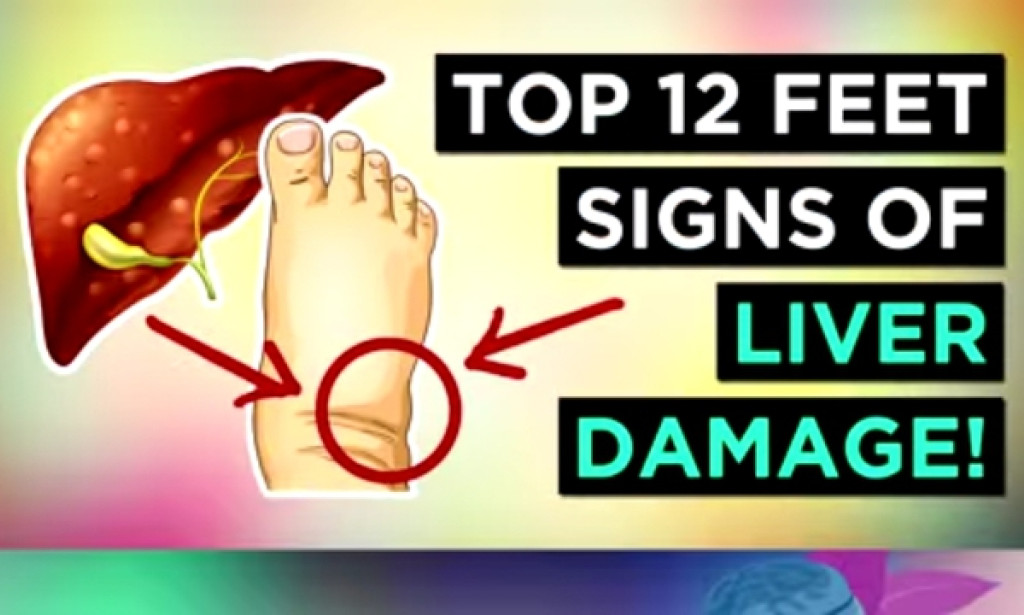The liver is an essential organ responsible for various vital functions in the body, including detoxification, metabolism, and bile production. Liver damage can occur due to a variety of factors such as excessive alcohol consumption, viral infections, obesity, and certain medications. Recognizing the signs of liver damage is crucial for early detection and timely intervention. Interestingly, the feet can provide valuable clues about the state of the liver's health. In this article, we will discuss the top 12 feet signs of liver damage.
Yellowing of the Skin (Jaundice):
One of the most prominent signs of liver damage is the yellowing of the skin and eyes, known as jaundice. In severe cases, this yellow discoloration can extend to the feet and nails. Jaundice occurs due to the liver's inability to process bilirubin, a yellow pigment produced when red blood cells break down.
Swelling (Edema):
Liver damage can lead to fluid retention, causing swelling in various parts of the body, including the feet. This swelling, known as edema, occurs when the liver fails to produce enough albumin, a protein responsible for maintaining fluid balance.
Spider Angiomas:
Spider angiomas are tiny, reddish spider-like blood vessels that appear on the skin's surface, including the feet. These occur due to elevated estrogen levels in the body, which can be a consequence of liver damage.
Palmar Erythema:
Palmar erythema refers to the reddening of the palms and soles, including the feet. This condition is caused by increased blood flow in the capillaries due to liver dysfunction.
Clubbing of Nails:
Liver damage can lead to the nails becoming rounded and enlarged at the fingertips, a condition known as clubbing. This occurs due to reduced oxygen supply and increased vascular congestion in the nail beds.
Dry and Itchy Skin:
Liver damage affects the body's ability to eliminate toxins efficiently, leading to a buildup of waste products. This can result in dry, itchy skin, including the feet, due to impaired liver function.
Brittle Nails:
Liver damage can also manifest as brittle, easily breakable nails. The nails may become thin, ridged, and exhibit a yellowish discoloration, indicating underlying liver problems.
White Streaks on the Nails (Terry's Nails):
Terry's nails are characterized by white streaks or patches that extend across the nails, leaving only a narrow band of pink at the tip. This condition can be associated with liver disease and is believed to be caused by reduced blood flow to the nail beds.
Yellow Nails (Lindsay's Nails):
Lindsay's nails, also known as yellow nail syndrome, involve a yellow discoloration of the nails and are commonly associated with chronic liver disease.
Peeling Skin:
Liver damage can cause the skin on the feet to peel or become flaky. This occurs due to impaired liver function, leading to reduced production of essential nutrients necessary for maintaining healthy skin.
Poor Wound Healing:
A compromised liver can hinder the body's ability to heal wounds effectively. Minor cuts or injuries on the feet may take longer to heal or become prone to infection in individuals with liver damage.
Foot Ulcers:
In advanced cases of liver damage, the feet may develop open sores or ulcers. These ulcers can be painful, slow to heal, and may increase the risk of infection.
Conclusion:
Recognizing the signs of liver damage is crucial for early detection and timely intervention. While the feet can provide valuable clues, it is important to note that these signs are not exclusive to liver damage and can be associated with other health conditions as well. If you notice any of these feet signs, it is important to consult a healthcare professional for a proper diagnosis and appropriate treatment.
Remember, early detection and management of liver damage can significantly improve outcomes and prevent further complications. Maintaining a healthy lifestyle, including a balanced diet, regular exercise, limited alcohol consumption, and avoidance of harmful substances, can help promote liver health.
Additionally, if you have any pre-existing liver conditions or are at risk of liver damage due to factors such as excessive alcohol consumption or certain medications, it is important to undergo regular check-ups and screenings to monitor your liver function and catch any potential issues early on.
In conclusion, the feet can exhibit various signs of liver damage, serving as a valuable indicator of underlying liver dysfunction. Paying attention to these signs and seeking medical advice can play a crucial role in the early detection and management of liver conditions. Remember to prioritize your liver health through a healthy lifestyle and regular medical check-ups to maintain overall well-being.


You must be logged in to post a comment.